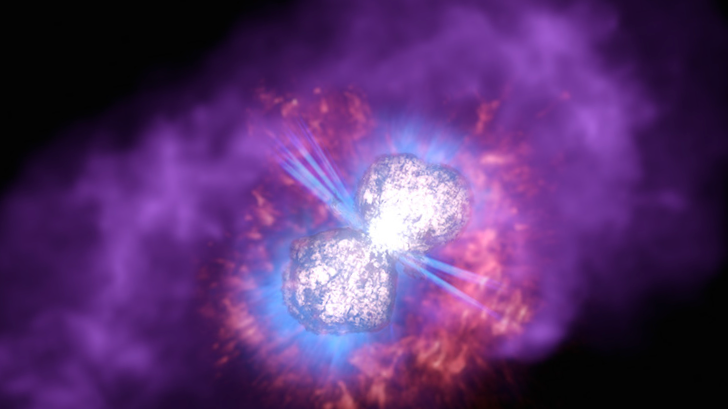Eta Carinae and the Great Eruption
Someday the massive star Eta Carinae will explode as a supernova! But that likely won’t happen for millions of Earth-years. And, in the meantime, this star is fascinating to astronomers as a pre-supernova, or a star approaching its death throes. Such stars do interesting things. For example, in relatively recent history, Eta Carinae had a brilliant and unusual outburst, observed by astronomers in the year 1843. It made the star, temporarily, brighter than Canopus, the 2nd-brightest star in our sky and the brightest star in Eta Carinae’s constellation Carina the Keel. Astronomers call the 1843 event the Great Eruption. On January 25, 2022, artists and astronomers released a new video (above) that presents the story of the Great Eruption and examines how Eta Carinae looks via the powerful tools of modern astronomy.
The AstroViz project of NASA’s Universe of Learning program created the video. They said:
Viewers gain appreciation for how the observations from two centuries ago connect to the resulting structures seen today. Full 360-degree 3D views help to assemble a complete mental model that aids interpretation of the NASA observations. Eta Car serves as a notable example of the outbursts in the dying stages of massive stars.
What happened in 1843?
Astronomers say that massive stars like Eta Carinae are known to have major outbursts. During its 1843 outburst, Eta Carinae became, briefly, one of the brightest stars in the night sky. At Hubblesite.org, NASA said the star released:
… almost as much visible light as a supernova explosion. The star survived the outburst, and slowly faded away for the next five decades.
Today, astronomers calculated that the Great Eruption caused Eta Carinae to expel some 10% of its own mass. The eruption created a double-lobed nebula, or cloud in space – known as the Homunculus Nebula – around the star. Astronomers who study this object believe the primary cause of its brightness change in the decades following the Great Eruption is that the Homunculus Nebula, expelled during the blast, afterwards blocked the star’s light.
Also, studies from Earth show that the Homunculus Nebula has been expanding ever since the 1843 Great Eruption.
EarthSky 2022 lunar calendars now available! Order now. Going fast!
Video of the Great Eruption
Astronomers can see the Homunculus Nebula in visible light. But they’ve looked at it at other wavelengths, too, including visible, ultraviolet, and x-ray light, as well as in the Hydrogen Alpha emission line. The Homunculus Nebula looks slightly different at all these various wavelengths. And the differences provide astronomers with clues about how the Homunculus Nebula around Eta Carina is evolving over time. Check out the video at the top of this post to learn more about the Great Eruption … and its aftermath.
Video credits: J. Olmsted, D. Player, L. Hustak, A. Pagan, J. DePasquale, G. Bacon, F. Summers (STScI), R. Hurt (Caltech/IPAC), NASA, ESA
Video images: A. Fujii, J. Morse (BoldlyGo Inst), N. Smith (U Arizona), Hubble SM4 ERO Team, NASA, ESA, STScI, JPL-Caltech, CXC, ESO, NOAO, AURA, NSF
Music: “Interstellar Wanderer”, Joseph DePasquale, CC BY-NC 4.0

Bottom line: In the 1840s, the southern star Eta Carinae briefly became of the brightest stars in the night sky. Then it faded again. Astronomers call the event the star’s Great Eruption.











